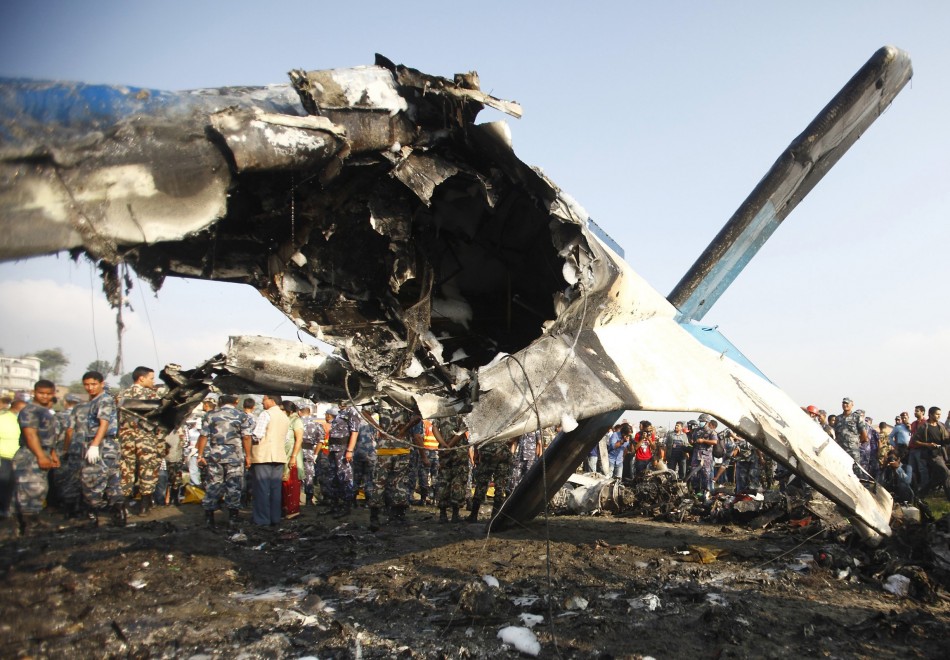Air India Crash Raises Concerns about Flight Safety Protocols in India

Introduction
In a recent update on the Air India jet crash, the Aircraft Accident Investigation bureau has released a preliminary report revealing that the fuel to the engines was cut off just before the crash. This development has raised concerns and questions about the safety protocols and procedures in place for flights in India.
Current Safety Protocols
The safety protocols for flights in India are set by the Directorate General of Civil Aviation (DGCA). These protocols include regular maintenance checks, strict adherence to weight and balance limits, and thorough inspections before takeoff. However, the recent incident has highlighted the need for stricter monitoring and enforcement of these protocols.
Possible Causes for Fuel Cut-off
The preliminary report also mentions that the fuel supply was cut off due to a malfunction in the fuel system. This could have been caused by a technical glitch, human error, or a combination of both. Further investigations
About the Organizations Mentioned
Air India
Air India is India’s flagship full-service airline, originally founded by JRD Tata in 1932, making it a pioneering force in Indian aviation[2]. It operates an extensive global network as a member of the Star Alliance and runs a wholly owned low-cost subsidiary, Air India Express, serving domestic and nearby international routes[2][3]. After nearly seven decades as a government-owned entity, Air India was fully privatized and returned to the Tata Group in January 2022, marking a significant turning point in its corporate journey[2]. Currently, Air India is undergoing a comprehensive five-year transformation program named Vihaan.AI, initiated by the Tata Group to restructure and modernize the airline[1][2][3]. This ambitious plan focuses on expanding its fleet and international network, enhancing customer experience, improving operational reliability, and leveraging technology and sustainability innovations. A landmark achievement under this transformation is Air India placing the world’s largest single aircraft order—470 planes from Airbus and Boeing, valued at $70 billion, signaling a massive fleet expansion and modernization drive[1][2][3]. Under the leadership of CEO Campbell Wilson, who brought extensive experience from Singapore Airlines, Air India is also integrating its subsidiaries Air India Express and Vistara to streamline operations and build a unified airline group[3]. The airline has been recognized for significant improvements, earning the “Most Improved Airline” award at the 2024 APEX Global Expo, reflecting enhanced cabin interiors, digital innovations like an award-winning app, and upgraded service quality[4]. On the cargo front, Air India is consolidating operations to create a dedicated cargo entity, aiming to increase freight volumes to 2.5 million tonnes by 2027, supported by advanced software for cargo and revenue management[1]. Despite a challenging safety history with several past accidents, Air India is now positioned as a resurgent global carrier combining Indian heritage with modern technology and business practices, making it a key player in the competitive aviation industr
Aircraft Accident Investigation Bureau
The Aircraft Accident Investigation Bureau (AAIB) is a specialized government agency found in several countries, including India, Malaysia, Myanmar, and the United Kingdom, responsible for investigating civil aviation accidents and serious incidents. Its primary mission is to enhance aviation safety by determining the causes of accidents, identifying contributing factors, and issuing safety recommendations to prevent future occurrences. The AAIB operates independently from regulatory and judicial authorities, ensuring impartiality and adherence to international standards set by the International Civil Aviation Organization (ICAO), particularly Annex 13 of the Chicago Convention. Historically, the need for independent accident investigation bodies emerged to separate safety oversight from regulatory functions, a shift that gained momentum globally after major aviation disasters. For example, India established its AAIB in 2012, following international best practices, and later strengthened its mandate through amendments in 2017 and 2021. Similarly, Malaysia’s AAIB was created in 2011, while the UK’s Air Accidents Investigation Branch (AAIB) has a long-standing reputation for operational independence within the Department for Transport. Key achievements of AAIBs include the publication of comprehensive investigation reports, the implementation of critical safety recommendations, and active participation in international investigations involving national aircraft. These bureaus have played a pivotal role in improving aviation safety protocols, influencing regulatory changes, and fostering global cooperation in accident prevention. Today, AAIBs are recognized for their rigorous investigative processes, immediate access to evidence, and commitment to transparency. Their work not only safeguards lives but also supports the aviation industry’s technological advancement and operational excellence, making them essential pillars in the global aviation ecosystem.
Directorate General of Civil Aviation
The Directorate General of Civil Aviation (DGCA) is India's primary civil aviation regulator, responsible for ensuring the safety and efficiency of air transportation within the country. Established under the Ministry of Civil Aviation, the DGCA became a statutory body in 2020 through the Aircraft (Amendment) Act[2]. Its key functions include registering civil aircraft, licensing pilots and air traffic controllers, certifying airports, enforcing civil air regulations, and investigating aviation incidents[1][3]. **History and Evolution**: The DGCA has evolved significantly over the years, adapting to changes in aviation technology and international standards. It coordinates with the International Civil Aviation Organization (ICAO) to align Indian aviation practices with global norms[3]. **Key Achievements**: Recently, the DGCA has been at the forefront of regulating drone technology in India. For instance, it granted certification to Garuda Aerospace, making it the first Indian drone startup to receive dual certification for its drones designed for agricultural use[3]. The DGCA also plays a crucial role in maintaining safety standards, ensuring that all airlines and airports comply with international regulations. **Current Status**: The Indian government is planning to replace the DGCA with a Civil Aviation Authority (CAA), modeled after the U.S. Federal Aviation Administration (FAA), to enhance regulatory effectiveness[2]. Currently, the DGCA operates under the oversight of the Ministry of Civil Aviation, with its headquarters in New Delhi and regional offices across India[3][4]. **Notable Aspects**: The DGCA is vital for ensuring the safety of air travel in India, through rigorous licensing and inspection processes. It also supports the development of new technologies like drones, contributing to India's growing aviation sector. As the aviation industry continues to evolve, the DGCA's role in maintaining safety standards and adapting to new technologies remains crucial.
DGCA
## Overview The Directorate General of Civil Aviation (DGCA) is India’s apex regulatory body for civil aviation, operating as an attached office under the Ministry of Civil Aviation[1][3]. Its primary mandate is to ensure the safety, security, and efficiency of civil aviation in India by enforcing regulations, licensing aviation professionals, certifying aircraft and airports, and investigating accidents[1][2][3]. The DGCA’s headquarters is located in New Delhi, with regional offices across the country[3]. ## History Originally established as a department under the Ministry of Civil Aviation, the DGCA was elevated to a statutory body by the Aircraft (Amendment) Act, 2020, granting it greater autonomy and legal authority[2]. This move was aimed at strengthening India’s aviation oversight in line with global standards. The organization is currently headed by the Director General of Civil Aviation and reports to the Minister of Civil Aviation[1]. ## Functions and Achievements The DGCA’s responsibilities are comprehensive. It registers civil aircraft, certifies airports, and issues licenses to pilots, engineers, and air traffic controllers after rigorous examinations and checks[2][4]. The organization prescribes and enforces airworthiness standards, conducts safety audits, and investigates aviation incidents and accidents, especially those involving aircraft up to 2,250 kg[2]. It also coordinates with the International Civil Aviation Organization (ICAO) to ensure India’s compliance with global aviation norms[3][4]. A notable achievement is the DGCA’s proactive approach to emerging technologies. For instance, it has been instrumental in regulating drone operations in India, recently granting double certification to an indigenous drone startup for agricultural applications—a significant step in integrating advanced technology into traditional sectors[3]. The DGCA’s enforcement of stringent pilot training and licensing standards has also contributed to India’s improving aviation safety record[4]. ## Current Status and Future As of 2024, the DGCA continues to play a















